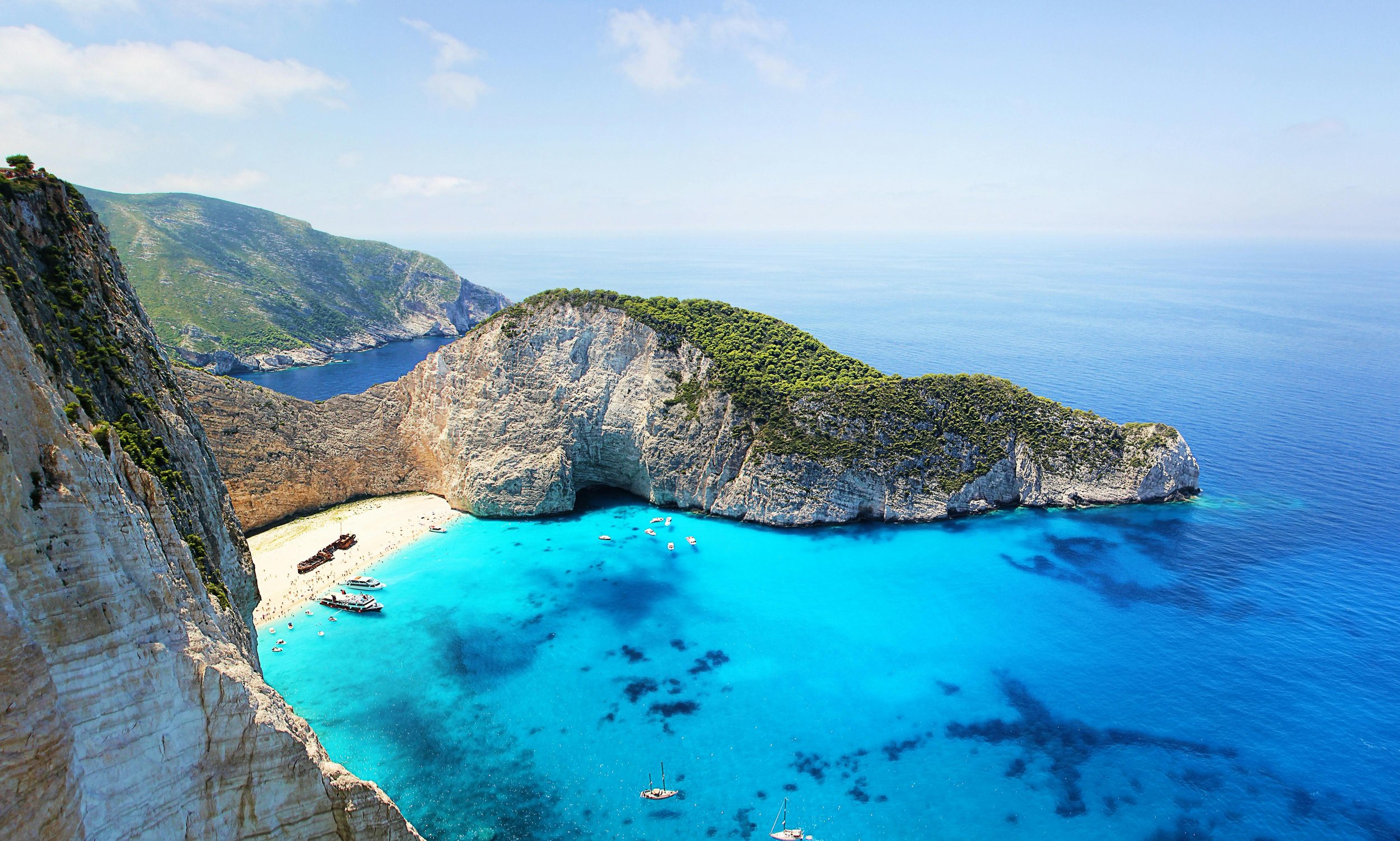What Is Coast FIRE vs Barista FIRE? Definitions, Examples & Which One Fits You
Looking for a softer route to Financial Independence—one where you can also enjoy the journey? Photo by Taryn Elliott on Pexels.
Reading time: 9 minutes
Disclaimer: I’m not a financial adviser, and the content in this website is for informational and educational purposes only. Please consult a qualified financial adviser for personalized advice tailored to your situation.
I’m not only writing about Financial Independence (FI) as theory—I’ve saved toward FI for 7–8 years, shifted careers, and run these calculations myself. Later in the article, I’ll share whether my career shift aligns with Barista Fire.
🌿 Thanks for reading The Good Life Journey. I share weekly insights on money, purpose, and health, to help you build a life that compounds meaning over time. If this resonates, join readers from over 100 countries and subscribe to access our free FI tools and newsletter.
👉 New to Financial Independence? Check out our Start Here guide—the best place to begin your FI journey.
TL;DR — Coast FIRE vs Barista FIRE at a Glance
| Strategy | What It Means | When You Can Slow Down | Income Source | Best For |
|---|---|---|---|---|
| Coast FIRE | Invest aggressively early, then let your portfolio grow without additional contributions. | Once your current investments are on track to reach FI by retirement age. | Active salary covers expenses while investments compound untouched. | Those who don't mind continuing work and want less savings pressure mid-life. |
| Barista FIRE | Semi-retire—reduce hours and rely on part-time work plus investment growth. | After accumulating a solid base, even if it's not full FI yet. | Part-time income + small portfolio withdrawals if needed. | People who value time freedom sooner and want meaningful but flexible work. |
In one sentence:
Coast FIRE = stop saving and coast → Barista FIRE = semi-retire and work part-time.
What Is Coast FIRE?
Coast FIRE means reaching a savings level early where your investments no longer need contributions to compound into a full retirement fund. You still work to cover ongoing living costs, but saving is optional—giving you more lifestyle freedom in mid-life. The idea is that you “forget” the portfolio you’ve accumulated until then, which will quietly compound in the background until your desired retirement date.
Key triggers for Coast FIRE:
You have enough invested today to grow into your FI number by your desired retirement age
Work becomes less about income, more about lifestyle
Savings pressure drops to zero until retirement
What Is Barista FIRE?
Barista FIRE is semi-retirement: you step back from full-time work and use part-time income plus small investment withdrawals to fund life, while your portfolio still continues growing in the background.
Key advantages:
More freedom now, a more flexible, lower-stress work
Healthcare benefits possible depending on job
Can step back earlier without reaching full FI yet
If you're trying to compare Coast FIRE vs Barista FIRE and choose which fits you best, the real deciding factor is whether you want to keep full-time work temporarily or trade income for time sooner.
Which FIRE Path Fits You best?
If you want to keep working but without saving stress → Choose Coast FIRE.
If you want more time freedom now and don’t mind part-time work → Choose Barista FIRE.
- You enjoy your career? Coast FIRE works well.
- You want more life balance sooner? Barista FIRE wins.
- Burnout is creeping in? Barista may give relief early.
- Financial security matters more than time? Coast may feel smoother.
Coast FIRE vs Barista FIRE Explained: Smarter, Balanced Paths to Financial Independence
In the next parts of the article, we break down in more detail the key differences between Coast FIRE and Barista FIRE—two lifestyle-focused versions of Financial Independence that help you build wealth without burning out. You’ll learn what each strategy means, how they work in real life, and which one might fit your goals if you’re seeking financial security and a life you actually enjoy along the way.
Trying to find less aggressive paths to FI is part of The Good Life Journey’s philosophy—ultimately, wealth should enrich your life, not consume it. Financial independence is important, but ultimately we need to enjoy every step of the journey.
Why Many Are Rethinking the Traditional FIRE Path
In last week’s blog post, I shared how I left my job before achieving financial independence (FI), prioritizing flexibility and well-being over traditional career paths. Burnout and the struggle to maintain a healthy work-life balance ultimately pushed me to reassess my career and path toward financial independence.
Although I considered several alternatives, I decided to take the leap into setting myself up as a freelance consultant, hoping to kill two birds with one stone—to have a larger amount of freedom over my daily schedule and also return to the more technical work in my field that I had been pushed away from over the last few years.
As mentioned in the previous post, I acknowledge that there are some risks with my move. However, after 7 years of saving and investing aggressively on the path towards FI, this has not only given me substantial peace of mind, but also the necessary courage and confidence to take on this type of leap. I’m not sure I would have been able to take this risk without having gone down the rabbit hole of financial independence.
My gamble may very well not work out in the end. I may have to go back to a similar role I know well in a year or two, which would delay (only slightly) my timeline to reaching FI. But if things go reasonably well, this move means I get to switch gears back to doing work I actually enjoy and to dramatically improve my physical and mental wellbeing in the process.
Going through this experience has made me reflect on what I believe to be a fairly common occurrence in the FI community. Every week, I see discussions in financial independence Reddit communities where people share their struggles with burnout and career dissatisfaction. Many admit to missing out on key life experiences in their 20s and 30s or sacrificing relationships to reach financial independence faster. But the ultimate question is—will their journey be worth it or will they look back with regret?
Nearly 80% of global workers report being unhappy in their jobs. Photo by Ron Lach on Pexels.
The overarching goal in our lives should be to live a content and meaningful life, which certainly should mean enjoying the whole journey, not just the destination. While we have advocated many times in this blog to maintain a healthy savings rate that will get you quickly to FI, it is equally clear that we shouldn’t forget to enjoy ourselves or to put our mental health or relationships on the line.
It may also be worth reflecting on whether your long-term goal leans more toward a LeanFIRE or FatFIRE lifestyle, since that choice will influence how aggressive you need to be with savings now.
What are the FI pathway alternatives that could manage to balance more effectively your wish for financial security with enjoying your life and minimizing regret at the end of it? Today, we outline two solid alternatives to grinding your life away toward some distant vision of "financial bliss and freedom".
Everyone is different and I am aware that taking the leap into freelancing or pursuing work as a part-time influencer may not be an exciting prospect for everyone. Therefore, over the course of several posts, we will be reviewing some of the different alternatives to following the traditional FIRE (financial independence, retire early) pathway. My hope is that some of you may feel aligned with and be able to consider and explore at least one of these alternatives, which still manage to effectively pursue financial independence, albeit in a more balanced way.
Coast FIRE vs Barista FIRE: Definitions, Pros & Real Examples
What Is Coast FIRE? Definition, Strategy & Example
Coast FIRE is when you save aggressively early on so that, after a certain point, your investments are left to grow without additional contributions. You continue working “only” to cover your expenses while letting your investments grow in the background toward early retirement.
In other words, pursuing Coast FIRE limits the intensive savings phase of the FI journey to a limited amount of years. After this initial period, you can sit back, relax, and allow compound interest to do the heavy lifting for you. Although this varies from case to case, we will illustrate this approach with a simple example using this Coast FIRE calculator as support (summarized in Figure 1):
Suppose you discover Coast FIRE at age 28. Because you don’t dislike your job, you envision working until age 60.
You envision needing about $50,000 in retirement. Then, as per the commonly-followed 4% rule of thumb, you would need to target a financial independence number of $1,250,000 ($50,000/4%).
Let’s say your household managed to save and invest $2,000 on a monthly basis during this initial, intensive savings phase. Then, assuming a 7% real return on investments from your portfolio, you could reach Coast FIRE in only 8 years at age 36. Not bad!
Of course, this is just an example. The exact duration will vary depending on factors like savings rate, portfolio returns, and desired retirement age.
Figure 1: Example of Coast FIRE. Save aggressively for 8 years until age 36, then stop saving and let investments compound until retirement age. From age 36 to 60, you will be able to enjoy a substantially higher standard of living, as a result of not having to focus on savings any more.
This scenario is depicted in Figure 1. The grey dashed line represents the “baseline scenario”, i.e., what your portfolio would have looked like if you hadn’t pursued Coast FIRE, i.e., if you had continued to invest consistently on a monthly basis during your entire career. Following this baseline scenario would allow you to reach full financial independence at age 50, 10 years earlier than by following the Coast FIRE plan.
However, by choosing to stop investment contributions at age 36 and pursue Coast FIRE instead (green line trajectory), you would be in a better place to fund a substantially higher lifestyle for 14 years from age 36 to 50. And that is not a bad tradeoff, especially if you are amongst the 21% of global workers that are happy in their job.
The advantages of pursuing Coast FIRE are quite clear: it reduces mid-life savings pressure, making it ideal for families facing rising expenses while still allowing a comfortable lifestyle compared to traditional, more aggressive path to FI. For those that truly enjoy their career, then I think pursuing Coast FIRE could make a lot of sense.
Using the calculator linked above made me realize that I’ve already reached Coast FIRE for a retirement at 50 y/o—I could stop already my monthly contributions and still retire 15-17 years early. This knowledge certainly reduces even further the pressure to perform in my new role as I transition to work as an independent consultant and part-time influencer. If things go really bad, we’re still in a very good spot.
The natural follow-up question is what happens if instead of continuing full-time, you decide to step back earlier—that’s where Barista FIRE comes in.
* Further Reading – Article continues below *
What Is Barista FIRE? Semi-Retirement for Financial Flexibility
Next enters another popular variation of the financial independence journey—Barista FIRE (financial independence retire early), meaning a semi-retirement lifestyle that blends savings with part-time work. It is a FI strategy where individuals accumulate sufficient savings and investments to cover most, but not all, of their future expenses. This is the Barista FIRE definition in a nutshell: step away from your full-time career and supplement your investment income with flexible, lower-stress work.
Instead of relying fully on their investments, Barista FIRE practitioners supplement their investment income by working part-time or in a lower-stress job. In some countries where health care expenses represent a real headache (e.g., US), pursuing this approach could make sense for some.
Barista FIRE offers work-life balance and financial security by blending savings with part-time income. Unlike Coast FIRE, where investments are left untouched until retirement, Barista FIRE involves withdrawing some investment income earlier while maintaining a flexible part-time job for added security.
The term “Barista FIRE” comes from Starbucks, known for offering part-time employees benefits like health insurance. The term symbolizes leaving a high-stress job to take on a more relaxed, flexible job, while still maintaining a large degree of financial independence.
Could you envision working in a lower paying, lower-stress job in exchange for more freedom now? Photo by Tim Douglas on Pexels.
We will illustrate this approach with a simple example using this Barista FIRE calculator as support. The example uses the same initial data we used in the Coast FIRE case:
Imagine you find out about this concept when you are 28 y/o. Your current annual take home pay is $74,000 after taxes and your annual expenses now (and in retirement) are $50,000. Analogous to the previous example we are starting out with zero net worth.
Assuming you manage to land a low-stress or hobby-related job that brings in $2,000 per month, you would be able to step away from your main career at age 45 (Figure 2). You would work under a decade at this low-stress or part-time job, and still manage to reach full financial independence and retire early at age 56—not bad at all!
Figure 2: Example of Barista FIRE. Save and invest for 17 years until age 45, then switch to a lower-stress, lower pay job. Live over the next decade off a combination of salary and investment income until reaching full financial independence at age 56.
This scenario is depicted in Figure 2 above. The grey dashed line represents the “baseline scenario”, i.e., what your portfolio would look like if you didn’t pursue Barista FIRE. Under this baseline scenario, you would continue to save and invest consistently until reaching full FI at age 50.
However, by choosing to switch jobs to a lower stress and lower pay setup at age 45 and therefore pursuing the Barista FIRE pathway instead (green line trajectory), you would still be able to reach full financial independence at age 56.
This means reaching financial independence only 6 years later, albeit likely enjoying the fruits of a more balanced, less stressful life over a decade. Effectively, this tradeoff means semi-retiring 5 years earlier but reaching full FI 6 years later, which could be an attractive compromise for many.
A fair counterpoint is that Barista FIRE assumes steady part-time income—which is not guaranteed in every economy. This is why running stress-tests or keeping a small buffer can prevent regret if job markets tighten or income fluctuates.
Coast FIRE vs Barista FIRE Compared — Examples, Pros, Cons & Which Fits You Best
Many readers find that seeing the pros and cons of Coast FIRE vs Barista FIRE side-by-side helps them decide quickly.
| Approach | Pros | Cons |
|---|---|---|
| Coast FIRE |
• No need to save anymore once threshold reached • Lower mid-life stress & spending flexibility increases • Ideal for those who enjoy their job or career identity |
• Requires heavy early savings • Full FI usually comes later vs. traditional FIRE • No early exit—you typically keep working |
| Barista FIRE |
• Earlier lifestyle freedom and reduced hours • Meaningful work remains optional & customizable • Less burnout risk and better life balance sooner |
• Requires reliable part-time income • Benefits like healthcare vary and can be costly • You still need to reach full FI eventually |
In the previous section, we presented two different alternative scenarios to the traditional path to FIRE, which often attempts to grind away as quickly as possible to full financial independence. However, this pathway is not without risks for many people, especially those related to burnout and missing out on other important aspects of life. Both Coast and Barista FIRE address this concern and provide two different approaches to address this.
What is the difference between Coast FIRE and Barista FIRE? Both are alternative FIRE strategies, but they differ in how they balance work and financial goals. Once you reach Coast FIRE, you usually remain in your current job but stop making monthly investment contributions. Your savings are projected to grow enough on their own to support your future retirement goals. In contrast, the concept of Barista FIRE involves stepping away from a full-time career as soon as possible and supplementing early investment growth with part-time or lower-stress work—a more flexible, lifestyle-oriented version of FIRE.
Coast FIRE allows you to increase substantially your monthly expenses after a certain point and to increase your lifestyle. This path works best if you enjoy your job or get some sense of fulfillment from it. In contrast, the Barista FIRE pathway is more suited to those wanting to leave their current jobs and pursue other reduced-stress, lower income-generating opportunities.
And of course, just as with LeanFIRE and FatFIRE, the right fit often comes down to your desired lifestyle in retirement and how much flexibility you want along the way. Coast FIRE followers tend to prefer spendier lifestyles, while Barista FIRE folk tend to appreciate a more frugal approach.
How My Career Shift Aligns with Coast and Barista FIRE
As mentioned earlier, I recently quit my high-stress job. The different terminology options presented today weren’t really on my mind when I made this decision. But now I am curious—how does this transition look like and does it align with any of the two strategies discussed in today’s post?
I am definitely not taking the Coast FIRE path, since I changed jobs and intend to continue with my investment contributions going forward! That said, if I later decide to scale back work and rely on existing investments, it could still align well with a Coast FIRE approach.
On the one hand, you could argue that there are some elements to the Barista FIRE approach in my job transition, given that it will likely result in a lower stress, part-time job that I enjoy. And I certainly feel comfortable with the notion that my salary may very well be lower than it was. On the other hand, it is a freelance gig, I have to pay for many items (e.g., health insurance) that would normally be paid for in most jobs considered for Barista FIRE.
I don’t really feel like I am slowing down yet either. I was working part-time in my previous role, trying to (unsuccessfully) reverse the burnout symptoms. But transitioning to my new role, I feel excited to increase my working hours. I am working in a high-impact field for society and picking up the fruit of my own labor. It certainly has many elements that don’t align with the Barista FIRE pathway.
Gen Z and many millennials searching for work-life balance may appreciate the benefits of Barista FIRE. Photo by Tony Schnagl on Pexels.
How to Choose the Right FIRE Path Without Burnout or Regret
What sacrifices come with pursuing financial independence? As I’ve experienced myself and as many others have reported, grinding away and trying to reach FI too quickly in a career you don’t derive enjoyment from—or one you outright suffer in—will certainly result in a very bumpy ride. Sure, it can be done, and many out there have managed to successfully get to the finish line.
But at what cost? As today’s examples show, Financial Independence often involves certain trade-offs. It’s important to take a step back and fully understand what it is you are trading here—is it your mental health, time with your family, friendships, missing out on key life events, or perhaps a mixture of the above?
Achieving Financial Independence doesn’t require relentless sacrifice for an arbitrary number. Sometimes, slowing down on purpose can actually get you to “freedom” faster—what I call “the middle path to FI”, a slower but more sustainable approach that lets you reclaim freedom and balance long before full independence.
As illustrated today, pursuing Coast FIRE and Barista FIRE can be two solid options that still grant you early on with many of the benefits of financial security, while offering a greater degree of balance, flexibility, and personal well-being in your life.
💬 I would love to hear your thoughts—do any of these alternatives resonate with you? Please let us know in the comments if you’ve pursued an alternative to the traditional FI path grind.
This is the first post of a series where we will discuss further alternatives to following the traditional path to financial independence. We envision other posts being related, but not limited, to: pursuing slow FI; engaging in mini-retirements throughout your career; using the power of geoarbitrage to retire early (retiring abroad); lean FIRE; and many others. Stay tuned!
Also, if you’ve enjoyed today’s post, don’t miss our in-depth article on Coast FIRE (by age) or where we explain the savings rate needed to retire in your mid-40s. Didn’t find what you were looking for? Check out our most recent articles further below.
🌿 Thanks for reading The Good Life Journey. I share weekly insights on money, purpose, and health, to help you build a life that compounds meaning over time. If this resonates, join readers from over 100 countries and subscribe to access our free FI tools and newsletter.
Dreaming of Early Retirement?
Plan Your Early Retirement with Our Financial Independence Calculator
Map your personal timeline to Financial Independence and Early Retirement:
🕒 See how soon you can retire based on your savings rate and expenses
📈 Test different scenarios to see how small changes affect your timeline
🌍 Explore retiring in a lower cost-of-living region to see how it accelerates your path
👉 Access the FI Calculator — Free for Email Newsletter Subscribers
1) Enter basic financial information related to after-tax salary, expenses, and investments; 2) Find out what your baseline retirement scenario looks like with no optimization; 3) Adjust your savings rate, expenses in retirement, or other assumptions to accelerate your dream early retirement.
Check out other recent articles
Frequently Asked Questions (FAQs)
-
Coast FIRE is when you save aggressively early, then stop contributing and let compound growth carry your portfolio to financial independence while you continue working only to cover living expenses.
-
Barista FIRE is a semi-retirement approach where you leave full-time work and support your lifestyle using part-time income plus continued investment growth, sometimes with small withdrawals during the transition.
-
The main difference is how income and work are handled after the early saving phase:
• Coast FIRE → stay in your career, stop saving, investments compound untouched.
• Barista FIRE → shift to part-time or lower-stress work and blend earnings with investment growth. -
Neither is universally “better.” Coast FIRE works well if you enjoy your job and want to remove savings pressure. Barista FIRE is ideal if you want more time freedom, less stress, or a lifestyle change even if reaching full FI takes longer.
-
Yes. Barista FIRE still leads to full FI—it simply allows you to scale down earlier and reach the final number more gradually while earning part-time income.
-
Burnout, loss of social connection, strained relationships, reduced well-being, and missing important life experiences are common risks. Some people also find they become too restricted or resent the process if balance is ignored.
-
Choose Coast FIRE if you want to stay in your job, maintain income stability, and eliminate saving pressure.
Choose Barista FIRE if you want more autonomy, want to reduce work hours sooner, and are comfortable with a slower path to full FI. Your values, energy, and lifestyle goals should guide your choice.
Join readers from more than 100 countries, subscribe below!
Didn't Find What You Were After? Try Searching Here For Other Topics Or Articles:





































